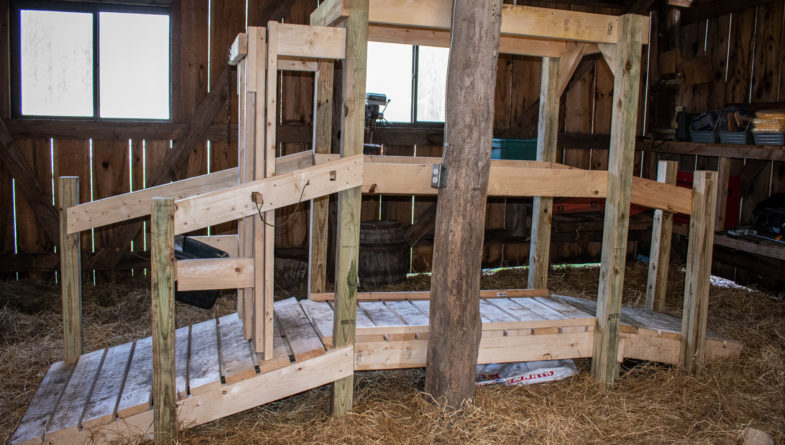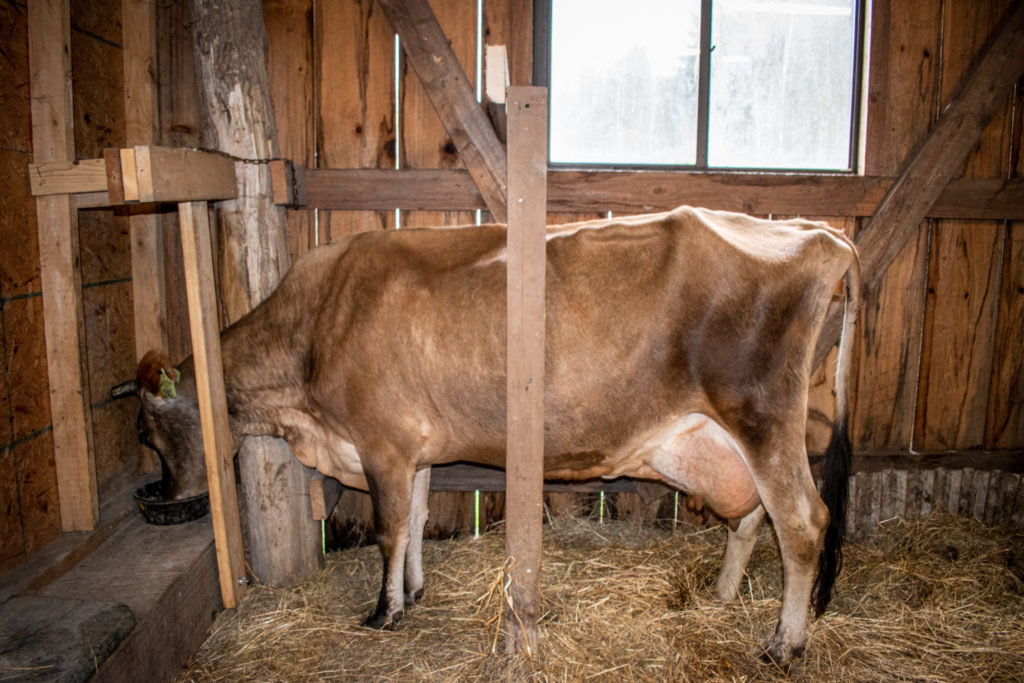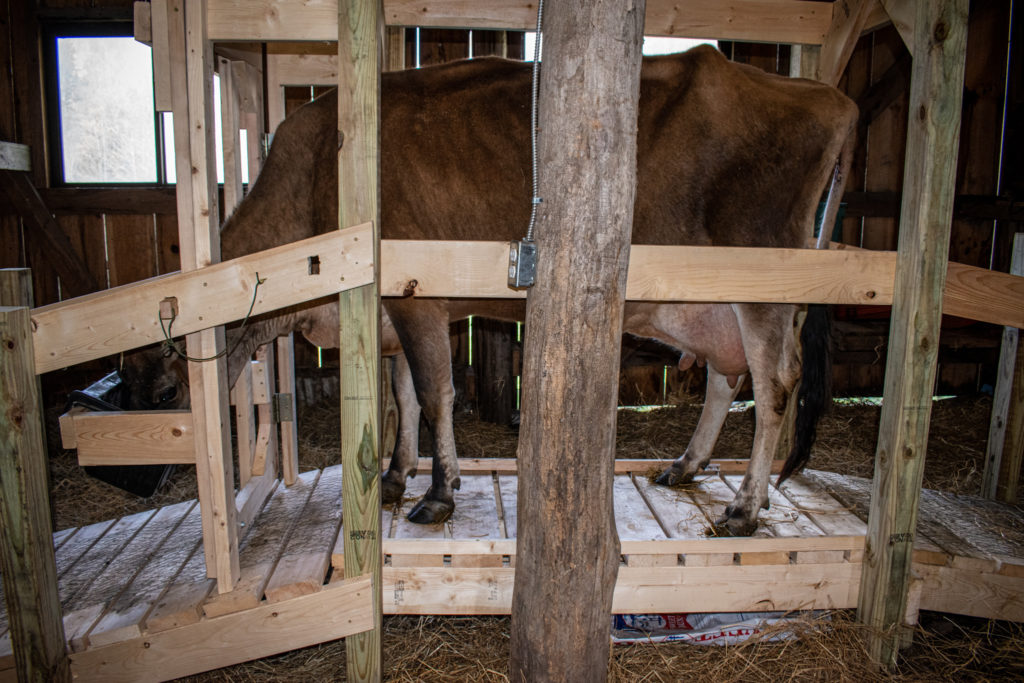Milking Stanchion Plans with Hinged Head gate

Looking for the perfect milking stanchion plans for your cow? Look no further! We have milked our goats on raised sanctions for years because we started with Nigerian Dwarf Goats and even though our kids were doing most of the milking, they were very short animals and kind of ornery so needed some way to contain them. When we added full size Saanens to the mix, we had little trouble building a dual-purpose milking stanchion that fit both breeds well enough. But our cow has always been milked in the barn, standing on the ground with just an improvised head gate and a post I sunk in the ground to keep keep her from climbing into my lap during the milking process.

This set up worked fine for me. I don’t mind sitting on the ground, and had no trouble reaching both sides but Jessica said that I would need to make it a little more accessible if I wanted her to join in the cow milking (she does the goats). So, I found a free weekend and napkin sketched a plan and threw this together. I did make one modification after the initial use and I have plans for some additions that will make the process even more smooth (pooping/peeing in the stanchion is a much bigger problem than it was on he ground!), but I’m happy with this as the framework for future improvements.
The end result is this functional beauty:

What To Look for in an Elevated Stanchion
Besides making things a little more comfortable for my better half, some of the important characteristics I was looking for in an elevated stanchion were the following:
Safety
There are some real dangers associated with getting any animal as large as a cow off the ground. I’ve had several goats jump off the stanchion into my lap while their head was still in the head gate and it sometimes makes a milking mess but there is no long term injury to either party. This wouldn’t be the same if a cow slips climbing on or off, or if she sticks a leg off the stanchion during milking. This stanchion plan incorporates the following safety features:
- The guard rails along the hips and at the foot level help the cow to be secure in her space.
- The stanchion is walk-through. The cow doesn’t have to back out of the stanchion or down any slopes. After milking the head gate hinges open and she simply walks forward off the stanchion.
- The stanchion is straight (no cornering entering or exiting the stanchion
- The chicken wire on the on and off ramps provide secure footing for the cow even if the surface is wet. I’ve been super happy with the functionality of this feature.
Comfort
Most animals like routine and consistency. Training an animal to a new routine in the milking should be done slowly. Introduce your girls to the stanchion while they stay on the ground initially and give them plenty of time to get comfortable with it before they climb up onto it. Make sure the conditions are ideal (dry clean ramps and feet, etc.) as they get accustomed to the new space. This design is intended to be more comfortable than milking on the ground for both the milker and the milkee.
- The stanchion is level where the cow sands for the milking process.
- Climbing up and down is on a gradual ramp with secure footing and doesn’t involve any cornering or backing for the cow.
- The head gate is adjustable for any size cow and most horn lengths.
- The stanchion is wide enough to fit the cow but not so wide that you need to crowd her against the side to reach the udder.
- The udder is at a comfortable working height for the milker sitting on a normal seat with a straight back. Adjust your seating as needed for your build.
- Visibility of the udder and access to hooves for trimming is greatly improved.
- The stanchion works great for other situations for which confining the cow make sense such as IV administration, blood samples, or AI.
Cleanliness
I don’t currently have a milking parlor and we milk in the barn (both our goats and our cows). We have worked hard to get a setup in the barn where animals are not free-ranging (no chickens in the hay, etc.) so there is no way around the fact that there is dust around and that there is animal poo in the same general area. Having a raised stanchion should provide one step removal from some of the muck. As we’ve learned to use the stanchion there has been some adjustment and cleanliness was more of a negative change than a positive one initially. But we’ve turned the corner there with some new gear (God bless the Pooper Chuter!) and some changes in the process so that the stanchion is indeed improving the cleanliness of the milk we’re bringing back to the kitchen.
Conclusion
And, because I’m a giver and I enjoy playing with what used to be Google Sketchup, I put together these milking stanchion plans (18 page pdf). They include a shopping list and step by step construction instructions so that you, too, can enjoy this beaut in your own milking parlor (someday I hope to have one of those myself and not just milk in the barn).
